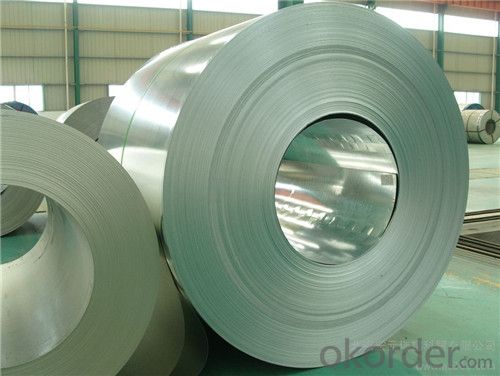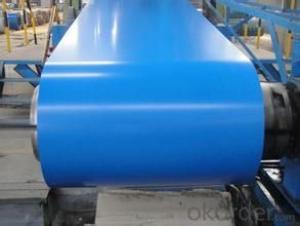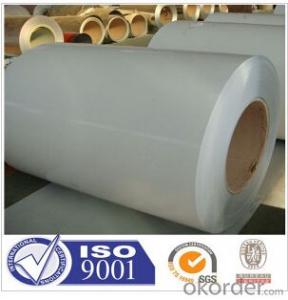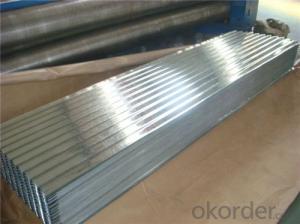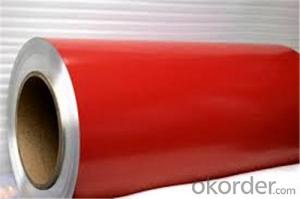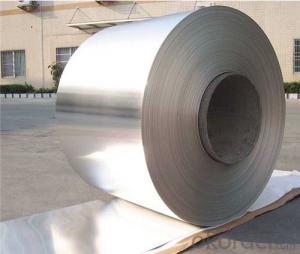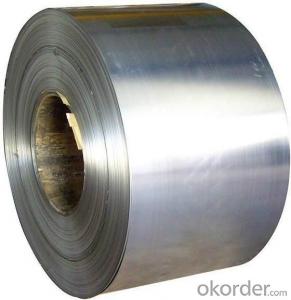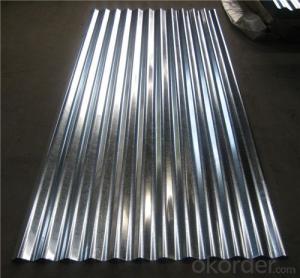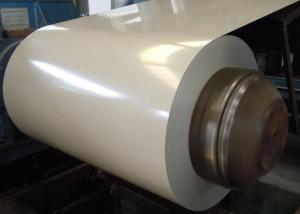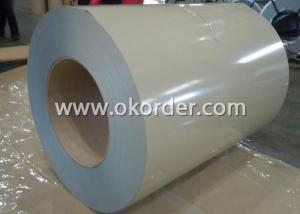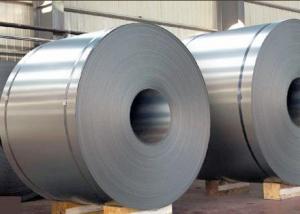Cold rolled galvanized steel coil for roofing
- Loading Port:
- Shanghai
- Payment Terms:
- TT OR LC
- Min Order Qty:
- 36 m.t.
- Supply Capability:
- 30000 m.t./month
OKorder Service Pledge
OKorder Financial Service
You Might Also Like
Packaging & Delivery
| Packaging Detail: | Standard seaworthy export package |
| Delivery Detail: | 25 days after recepit of 30% TT |
Specifications
Cold roll galvanized coil
Thickness: 0.14-2.0mm
Width: 600-1250mm
Zinc coating:Z60-275g/sqm
ID coil:508/610
Cold roll galvanized coil
Thickness: 0.14-2.0mm
Width: 600-1250mm
Zinc coating:Z60-275g/sqm
The detailed information:
Commodity | Hot dip galvanized steel coil and sheet |
Techinical Standard | JIS 3302 / ASTM A653 / EN10143 |
Grade | DX51D / DX52D/ DX53D/ S250,280,320GD |
Types | Commercial / Drawing / Deep Drawing / Structural quality |
Width | 600-1250mm |
Thickness | 0.14-2.0mm |
Type of coating | galvanized |
Zinc coating | Z60-275g/m2 |
Surface treament | chromed / skinpass/ oiled/slightly oiled/ dry/ anti-fingerprint |
Surface structure | zero spangle / minimized spangle / regular spangle/ big spangle |
ID coil | 508mm or 610mm |
Coil weight | 3-8 MT per coil |
Package | Properly packed for ocean freight exportation in 20''containers |
Application: | Industrial panels, roofing and siding for painting |
Price terms | FOB,CFR,CIF |
Payment terms | 30%TT in advance+70% TT or irrevocable 70%L/C at sight |
delivery time | 25 days after recepit of 30% TT |
Remarks | Insurance is all risks |
MTC will be handed on with shipping documents | |
We accept the third party certificatation test |
- Q: What is the yield strength of steel coils?
- The yield strength of steel coils can vary depending on the specific grade and composition of the steel. However, the typical yield strength of steel coils ranges from 300 to 600 megapascals (MPa).
- Q: I'm planning to buy a pair of Doc Marten boots but I want some steel toed ones. I don't know if all of them are steel toed, or only some of them, or what?
- Steel Toe Doc Martens
- Q: How are steel coils inspected for thickness?
- To ensure their quality and compliance with industry standards, steel coils undergo inspections for thickness using a range of methods. One widely used approach is the utilization of a non-contact laser measurement system. This technique involves directing a laser beam towards the surface of the steel coil and measuring the time it takes for the beam to reflect back. By accurately calculating this time, the thickness of the steel coil can be determined. Another method involves the use of ultrasonic technology. Ultrasonic sensors emit high-frequency sound waves that penetrate the coil. These sound waves bounce back differently depending on the thickness of the steel, enabling the sensors to measure the thickness accurately. In addition, some manufacturers may choose to employ the eddy current testing method. This method involves passing an alternating current through a coil, thereby generating a magnetic field. The thickness of the steel coil affects the impedance of the coil, which can be measured. By analyzing the changes in impedance, the thickness of the steel coil can be evaluated. Furthermore, some companies utilize a mechanical method known as the caliper method. This technique involves physically measuring the thickness of the steel coil by applying pressure to the coil and reading the measurement on a caliper gauge. Regardless of the method utilized, it is essential to inspect steel coils for thickness to ensure they conform to the required specifications and meet the desired performance criteria for various applications.
- Q: What are the different types of welding methods used for steel coils?
- There are several different types of welding methods commonly used for steel coils, including spot welding, seam welding, and flash butt welding. Spot welding involves applying heat and pressure to two overlapping pieces of metal to create a strong bond. Seam welding is similar to spot welding but is used for continuous welds along the length of the coil. Flash butt welding involves using an electric current to create a heat source between two ends of the coil, which are then pressed together to form a solid weld. These methods allow for efficient and effective joining of steel coils in various industrial applications.
- Q: How are steel coils protected from chemical damage?
- Steel coils are typically protected from chemical damage through various methods such as applying protective coatings or using barrier films. These protective measures act as a barrier between the steel surface and any potentially corrosive chemicals, preventing direct contact and minimizing the risk of chemical damage.
- Q: What are the common coil loading and unloading techniques?
- Some common coil loading and unloading techniques include using overhead cranes or forklifts to lift and move the coils, using coil cars or transfer tables to transport coils within a facility, utilizing coil hooks or C-hooks to securely hold and transport coils, and employing coil tilters or turnstiles to rotate or position coils for loading or unloading.
- Q: What is the process of galvanizing steel coils?
- The process of galvanizing steel coils involves several steps to enhance their durability and protect them from corrosion. Firstly, the steel coils are cleaned thoroughly to remove any dirt, oil, or other impurities that may be present on the surface. This is done through an acid pickling process, where the coils are immersed in a bath of diluted acid solution or treated with a chemical cleaner. This step ensures that the surface of the coils is free from any contaminants, allowing for better adhesion of the zinc coating. After the cleaning process, the coils are rinsed to remove any remaining acid or cleaner. This is crucial to prevent any adverse reactions with the next step of the process. The next step is the actual galvanization, where the cleaned coils are dipped into a bath of molten zinc. The coils are carefully passed through the zinc bath using rollers or other mechanisms to ensure that the entire surface is coated evenly. The zinc bath is maintained at a specific temperature, typically around 450°C (842°F), which allows the molten zinc to bond with the steel surface. As the coils are withdrawn from the zinc bath, excess zinc is removed by passing them through air knives or by centrifugal spinning. This helps to control the thickness of the zinc coating and ensure a uniform appearance. Once the galvanization process is complete, the steel coils are cooled down gradually to room temperature. This allows the zinc coating to solidify and bond firmly with the steel surface, creating a protective barrier against corrosion. The final step in the process is inspection and quality control. The galvanized steel coils are inspected for any defects, such as uneven coating or areas with insufficient zinc coverage. This is usually done visually or through specialized equipment that can detect any anomalies. Additionally, the coating thickness is measured to ensure it meets the required specifications. Overall, the process of galvanizing steel coils is designed to enhance their longevity and protect them from rust and corrosion. By applying a layer of zinc coating to the steel surface, the coils become more resistant to environmental factors, making them suitable for a wide range of applications in various industries.
- Q: I just want to know why is cold steel katana a very good sword?? How can you tell if a cold steel katana is good or not
- The only way to be sure about the steel in your sword is to take it to a university and have its components analyzed by the metals department. If there are high concentrations of carbon and iron and not much else, then you know the steel in your sword is of high quality and has been made well. There really is no other way short of bashing the sword against something else to determine how brittle it is or how strong it is. Ideally, you want a combination of both...high carbon steel on the outside to hold an edge, low carbon steel on the inside to give it strength and allow it to bend instead of break.
- Q: How are steel coils inspected for surface defects using non-destructive testing methods?
- Steel coils are inspected for surface defects using non-destructive testing methods such as visual inspection, magnetic particle inspection, and eddy current testing. Visual inspection involves closely examining the coil's surface for any visible defects or abnormalities. Magnetic particle inspection is used to detect surface cracks and defects by applying a magnetic field and then applying iron particles that reveal any magnetic leakage caused by defects. Eddy current testing is employed to detect surface cracks and defects by inducing an alternating current in a coil that creates a magnetic field, and any changes in the field caused by defects are detected. These non-destructive testing methods help ensure the quality and integrity of steel coils without causing any damage.
- Q: I want to make a stock removal knife, but I am really confused about what steel to use. I am just a beginner but I read o1 steel is great? Also I am kind of on a budget.
- O-1 is an excellent steel. If you've never made a knife before find an old file and use it. My first knives weren't that good, it took a little practice to get the geometry right so be prepared to burn some steel. The advantage of a file is it is already hardened, unless you have a torch or forge that will be near imposable for you to do. The most important thing in knife making is the heat treating. The best steel wont perform like it's supposed to. If you decide to use a file grind your blade out, keep the steel cool; do not let it get any color in it (brown, blue, purple) as this destroys the temper. When your finished put the blade in the oven at 400 deg for an hour. It should have a good hardness for a knife then. As for me, I use old car springs(5160), saw blades(L-6) for many of my blades, Good luck.
Send your message to us
Cold rolled galvanized steel coil for roofing
- Loading Port:
- Shanghai
- Payment Terms:
- TT OR LC
- Min Order Qty:
- 36 m.t.
- Supply Capability:
- 30000 m.t./month
OKorder Service Pledge
OKorder Financial Service
Similar products
Hot products
Hot Searches
Related keywords



